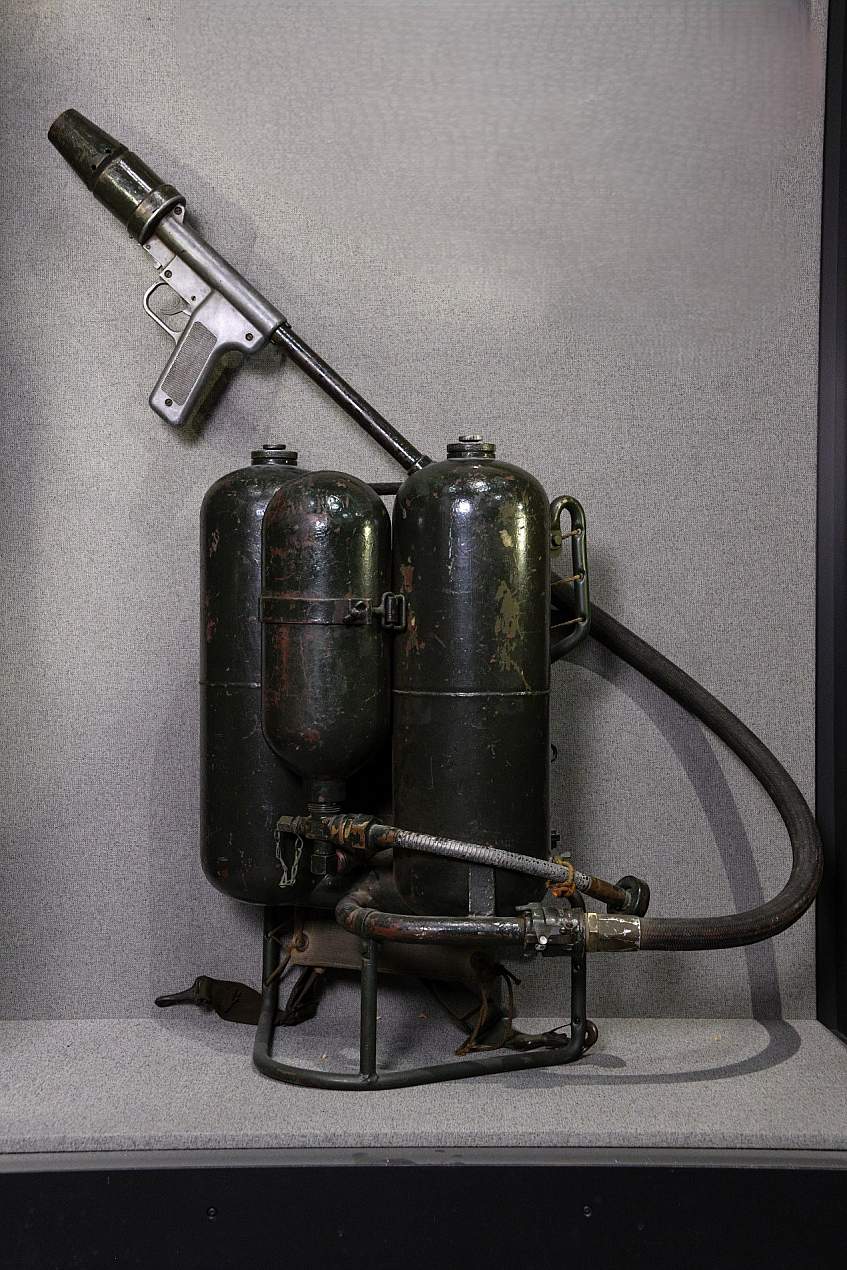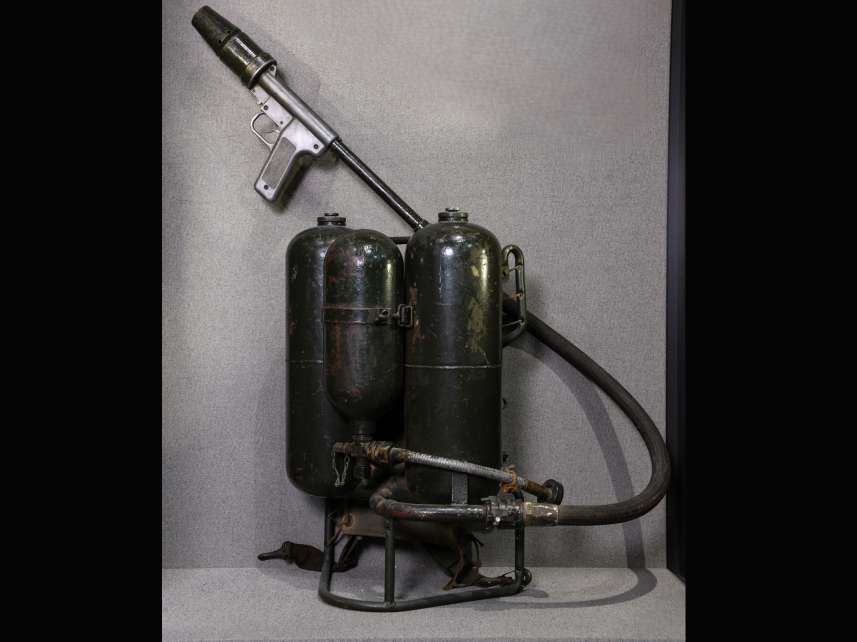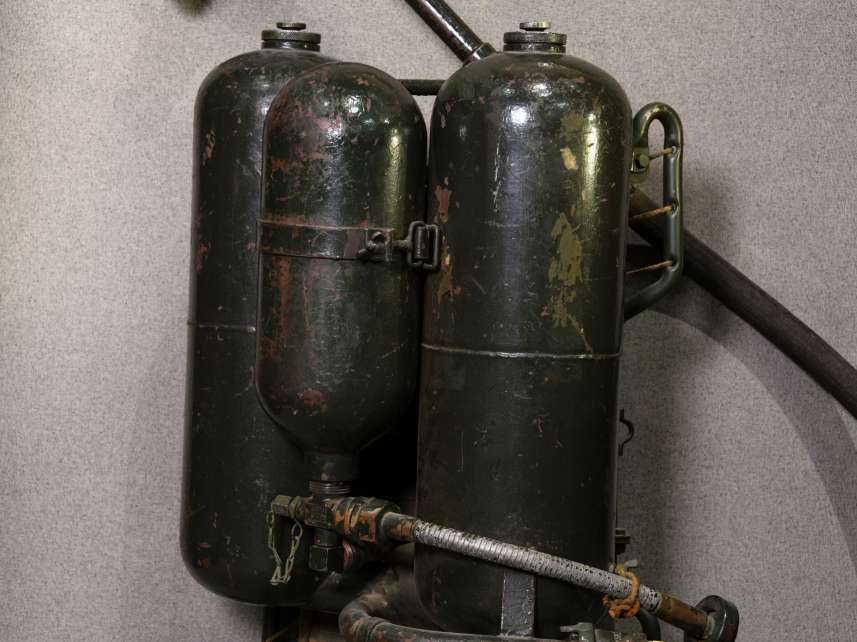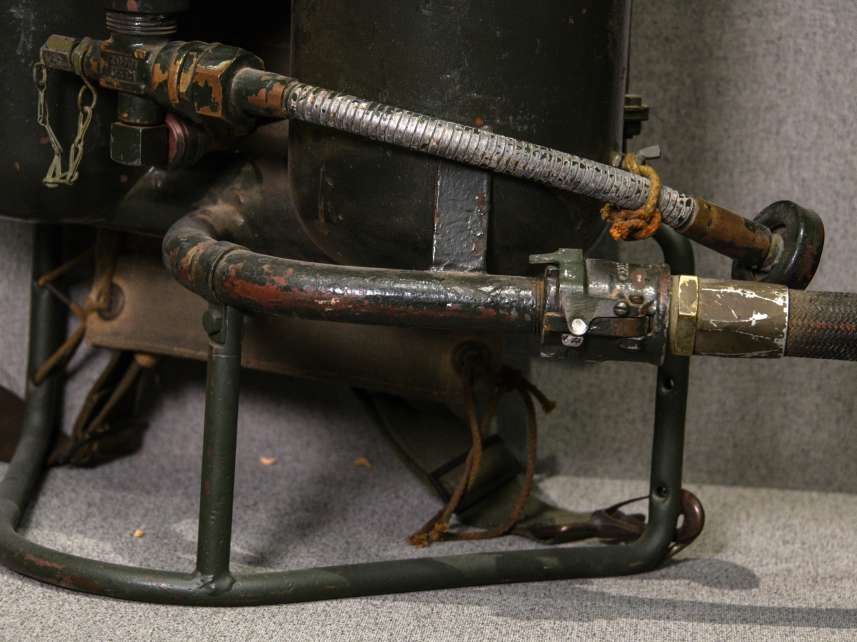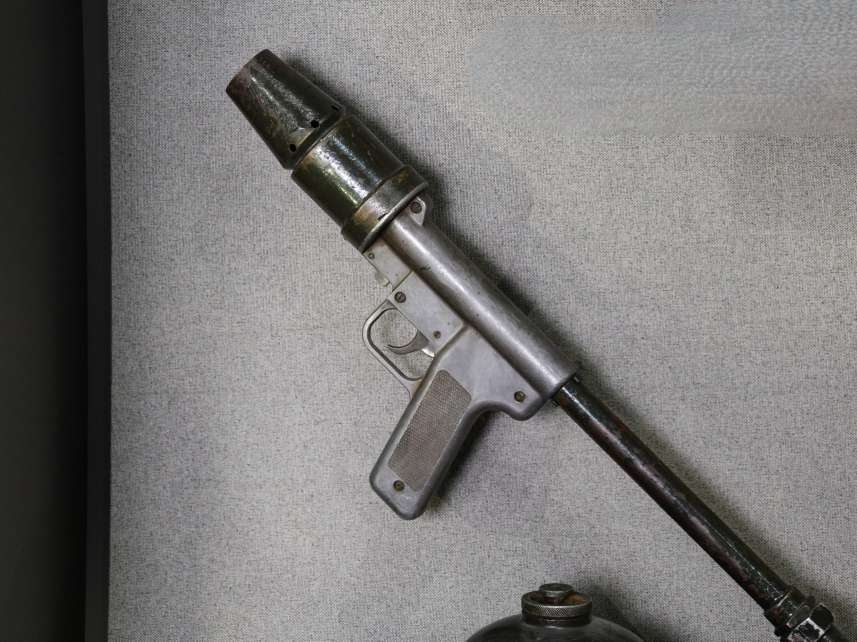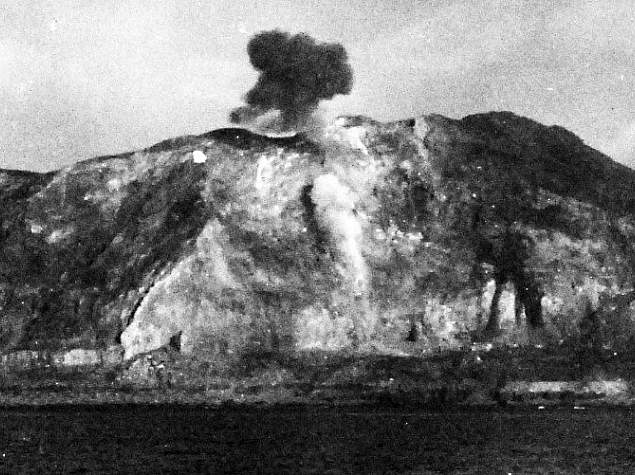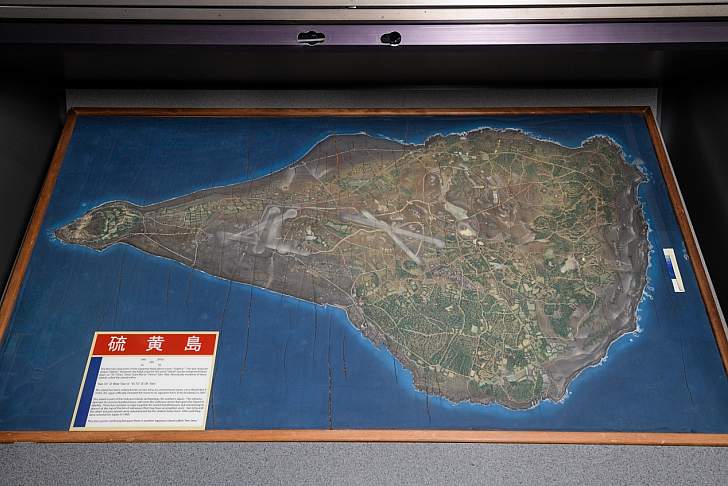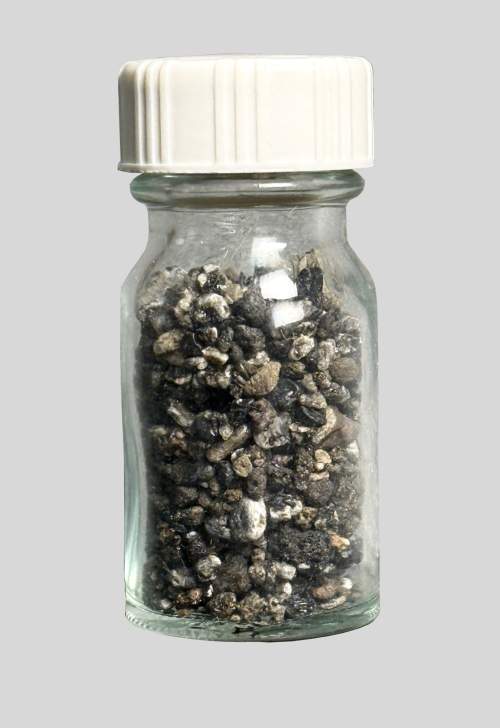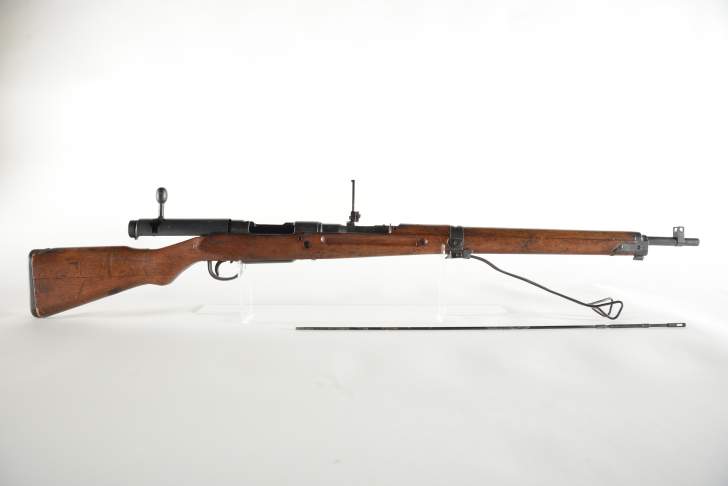A Mark II flamethrower with Mark II flamegun, purchased by the Admiral Nimitz Foundation for the V + 50 celebration on 2 September 1995. The Japanese dug into the island so well that aerial strikes against the island and preinvasion bombardment did little to damage their defense system. Their emplacements were sturdy and well-concealed, forcing the Americans to fight desperately to even approach their positions. Flamethrower operators had a high casualty rate, but they were invaluable for their role in destroying the Japanese pillboxes and other concealed positions across the island. Americans used a combination of flamethrowers, grenades, and satchel charges to take out Japanese fortifications, usually at great cost to the assailants. Of the twenty-seven Medals of Honor awarded at Iwo Jima, twelve of them were for efforts in eliminating enemy positions. Only six of those men survived Iwo Jima to receive the medal.
The Defenses: Flamethrower
In this section: The hidden defenses of Iwo Jima.
Overview
Lieutenant General Tadamichi Kuribayashi spent over six months bolstering the defenses at Iwo Jima. He knew that the air strip on the island and the harassment of American bombers by Japanese aircraft would soon make the island a target.

A wrecked Japanese emplacement at the foot of Mount Suribachi. Official U.S. Navy Photograph, now in the collections of the National Archives.
To prepare, the Japanese dug miles of tunnels into the volcanic rock, creating a massive underground network of bunkers, storage spaces, and more. The tunnels hid the Japanese forces from U.S. surveillance. This made the Americans believe that the island had far fewer defenses than it really did. Concrete bunkers added to the network as places for the Japanese to hide from enemy fire. It also gave them excellent vantage points from which to pick off the landing Marines while staying hidden from anyone who might shoot back.
Even when the Americans discovered the Japanese positions, they could not eliminate them without extreme difficulty. The complex network of caves and pillboxes resulted in lethal chokepoints that the Marines nicknamed “The Meat Grinder” and “Bloody Gorge.” Progress of the invasion was sometimes measured in yards. Operation DETACHMENT became the only battle of World War II in which American casualties outnumbered that of the Japanese.

Flamethrower operators in action at Iwo Jima, February-March 1945. Official U.S. Marine Corps Photograph, now in the collections of the National Archives
M2-2 Flamethrower
Exhibit Preview
Iwo Jima
The Battle for Iwo Jima remains to this day the bloodiest battle in Marine Corps history. It is also the only battle in World War II in which American casualties outnumbered the Japanese. ...

